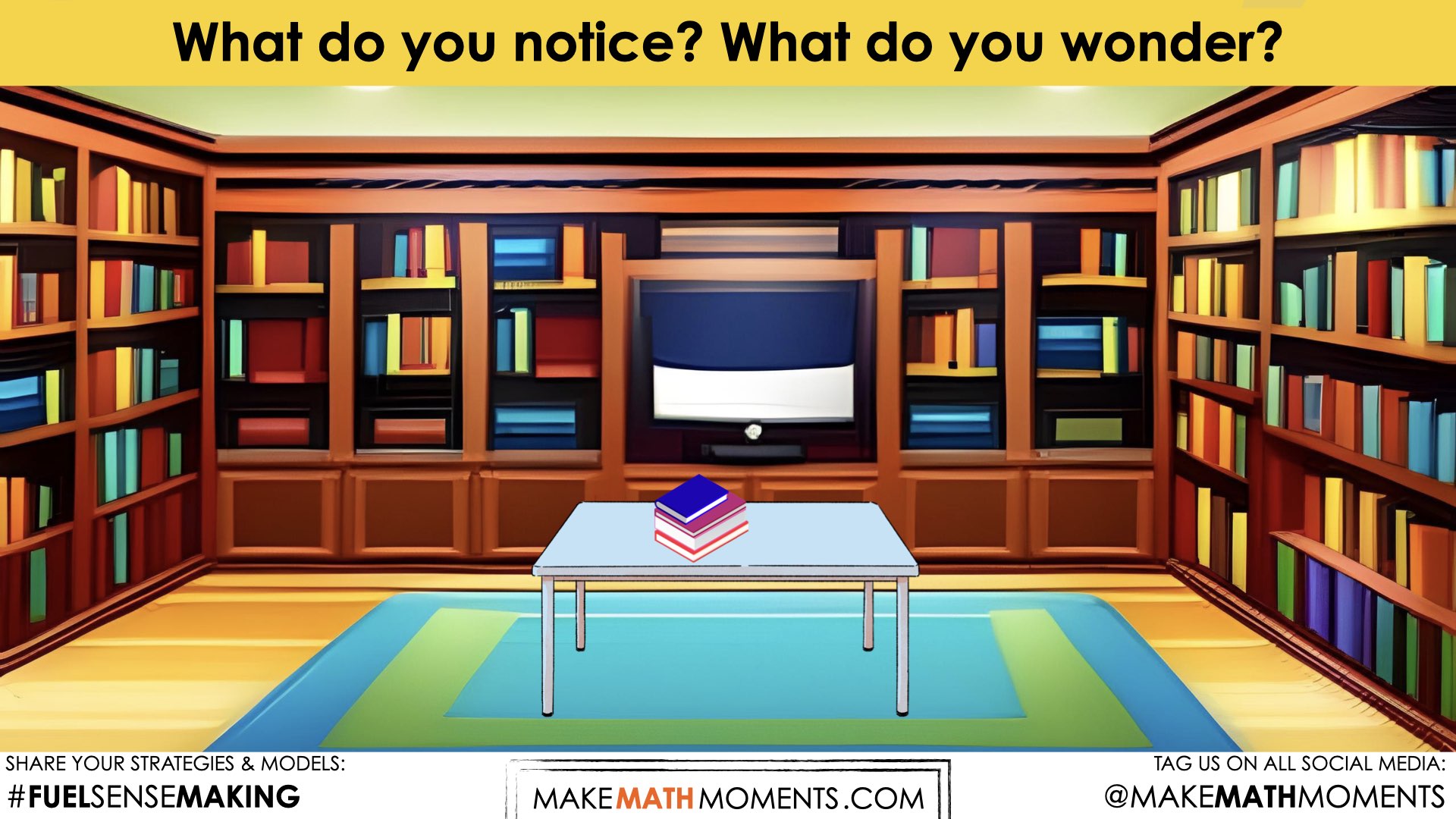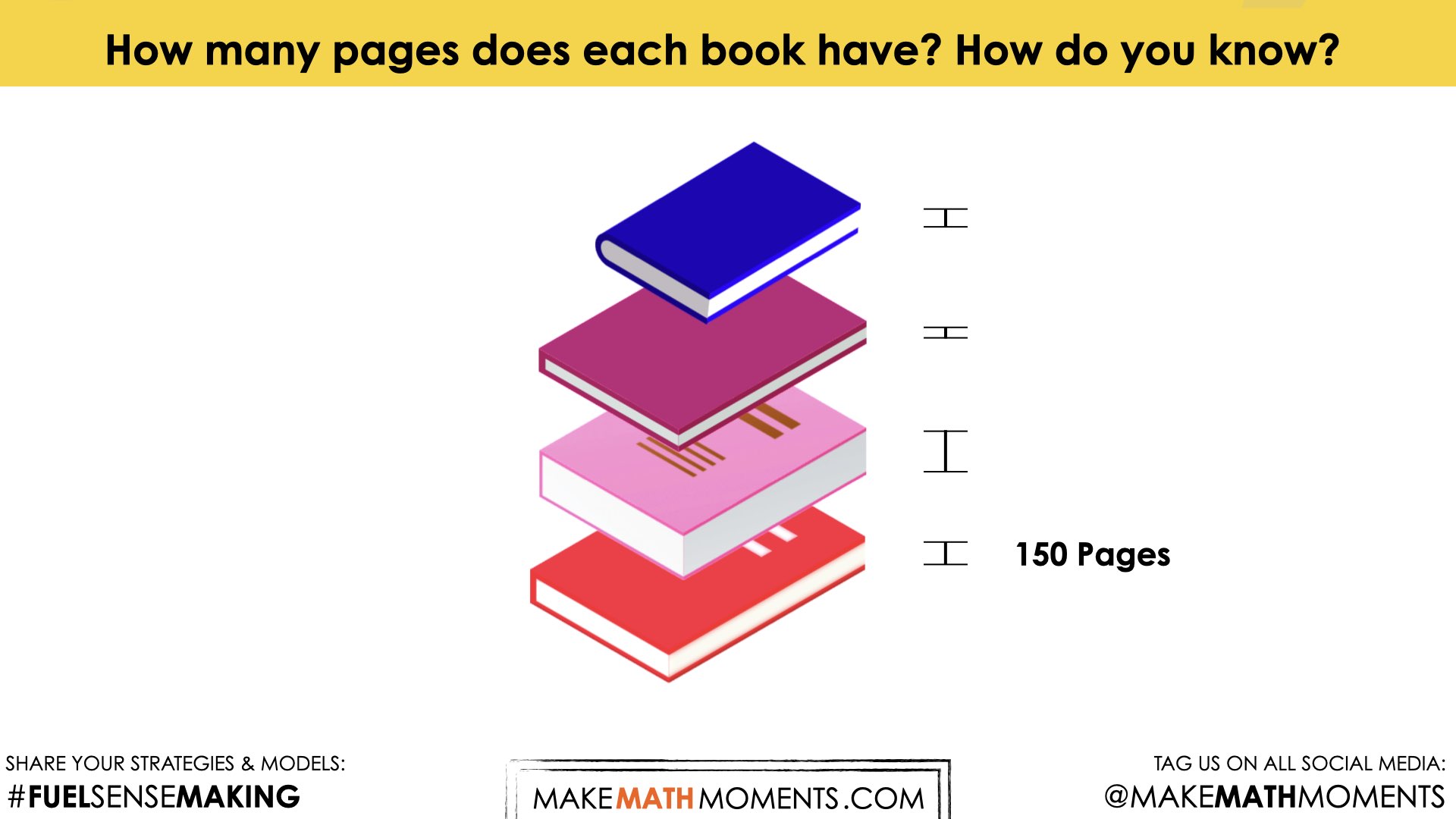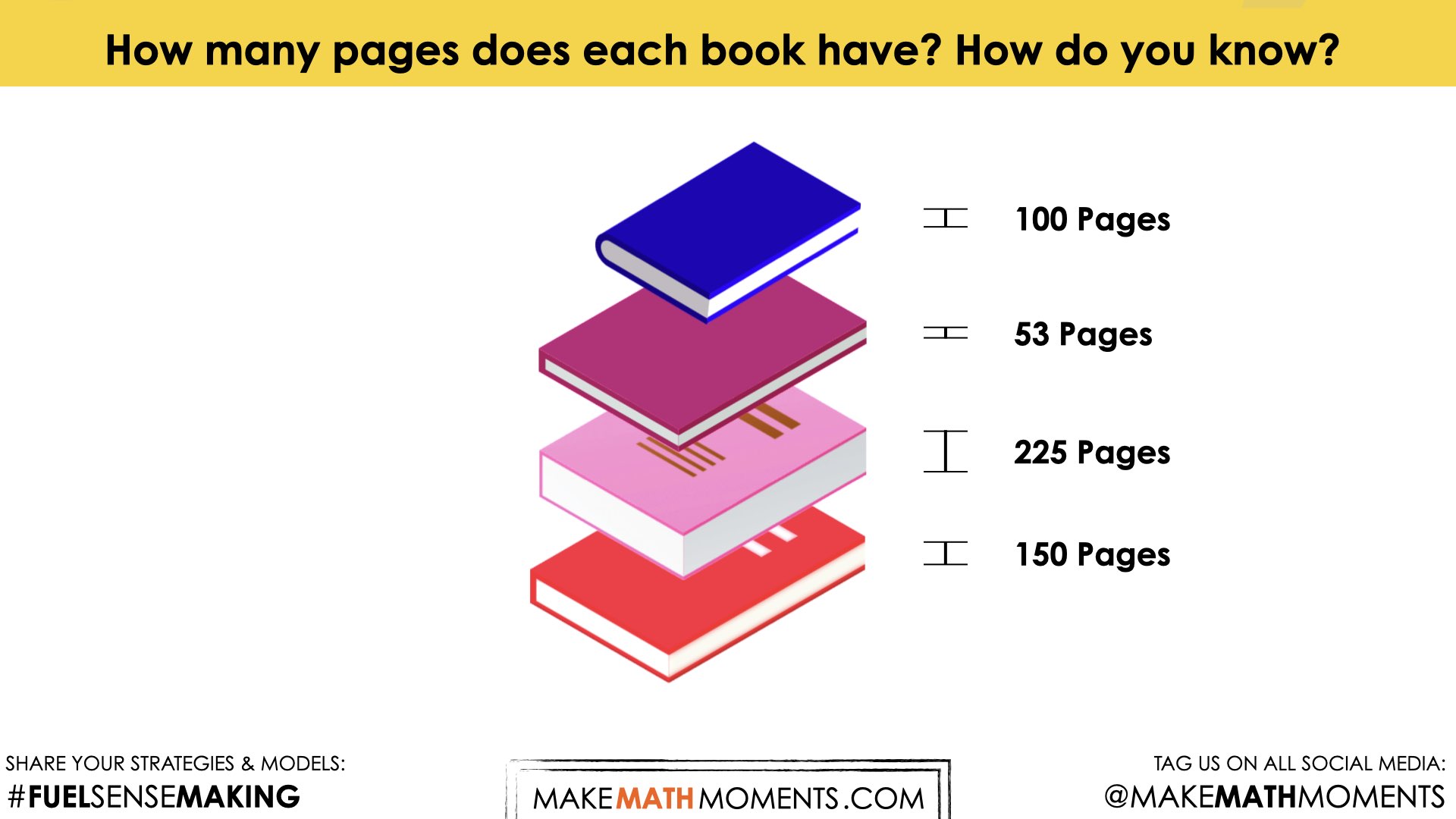AVID READER [DAY 3]
SUBTRACTION STRATEGY: ADD UP INSTEAD
Explore efficient strategies to subtract values within 50
Intentionality
Spark Curiosity
Fuel Sensemaking
During Moves
Student Approaches
Next Moves
Consolidation
Reflect and Consolidation Prompts
Resources & Downloads
Educator Discussion Area
Intentionality & Unit Overview

Length of Unit: 5 Days
Access each lesson from this unit using the navigation links below
Students will solve a subtraction question using the takeaway strategy of decomposing the subtrahend.
Intentionality…
Students will solve a subtraction question using the takeaway strategy of decomposing the subtrahend.
Some of the big ideas that may emerge through this task include:
- Understanding hierarchical inclusion allows for flexible composing and decomposing of numbers
- Numbers can be decomposed by separating a whole into two or more parts
- Subtraction names the missing part in terms of the whole
- Different subtraction situations will elicit different strategies
- Number relationships provide the foundation for strategies to help students remember basic facts
- Subtraction can be used in either take away, comparison, or missing addend situations. Missing addend is explored in this task.
- Models can be used to connect concrete to abstract
Before starting this unit, students should be familiar with:
- Facts of 10 ( e.g., 6 + 4 = 10, 10 – 4 = 6)
- Flexibility when decomposing numbers (e.g., 13 can be decomposed into 10 and 3, but also 9 and 4, 8 and 5, etc)
Spark Curiosity
What Do You Notice? What Do You Wonder?
Show students the following video:
Then, ask students:
What do you notice?
What do you wonder?

Give students about 30-60 seconds to do a rapid write on a piece of paper or silent individual think time.
Replaying the video can be helpful here if appropriate.
Then, ask students to pair share with their neighbors for another 60 seconds.
Finally, allow students to individually share with the entire group. Be sure to write down these noticings and wonderings on the blackboard/whiteboard, chart paper, or some other way that is visible to all. This helps students to see the thinking of their classmates and ensures each student that their voice is acknowledged and appreciated. Adding student names or initials next to their notice/wonder is one way to acknowledge their participation and can motivate others to join in.
Some noticings and wonderings that may come up:
- I notice that there are books on the desk
- I notice that they are all different sizes of books
- I wonder if someone has read all of those books
- I wonder how many pages are in each book
Estimation: Prompt
After we have heard students and demonstrated that we value their voice, we can land on today’s question. Acknowledging that the question came from students underscores their identities as thinking mathematicians who are making sense of problems.

How many pages does each book have?
Follow up that question with:
How do you know?
Have students make estimates first by thinking about an amount of pages that they believe will be too low, followed by an amount that they think will be too high.
Challenge students to be risky with their low/high estimates.
Then, have them pick their best estimate and share with their neighbours before sharing and recording on the chalk/whiteboard or chart paper as a class.
Ask students what information they might need in order to figure out the answer.
While Students Are Estimating…
Monitor student thinking by circulating around the room and listening to the mathematical discourse. You may identify some students whose thinking would be valuable to share when the group’s estimates are collected.
Similar to collecting their noticings and wonderings, collect students’ range of estimates and/or best estimates along with initials or names. Having some students share justifications is an opportunity for rich, mathematical discourse.
Estimation Reveal
Share the following estimation reveal video:

Celebrate students who estimated closest to 23 books.
Fuel Sense-making
Crafting A Productive Struggle: Prompt
Login/Join to access the entire Teacher Guide, downloadable slide decks and printable handouts for this lesson and all problem based units.
During Moves
While Students Are Productively Struggling…
Login/Join to access the entire Teacher Guide, downloadable slide decks and printable handouts for this lesson and all problem based units.
Student Approaches
Student Approach 1: Using a Tool to Direct Model and Count All
Login/Join to access the entire Teacher Guide, downloadable slide decks and printable handouts for this lesson and all problem based units.
Student Approach 2: Counting Back with a Drawing
Login/Join to access the entire Teacher Guide, downloadable slide decks and printable handouts for this lesson and all problem based units.
Student Approach 3: Open Number Line to decompose the subtrahend by taking away tens then ones
Login/Join to access the entire Teacher Guide, downloadable slide decks and printable handouts for this lesson and all problem based units.
Student Approach 4: Adding up using an open number line (tens then ones)
Login/Join to access the entire Teacher Guide, downloadable slide decks and printable handouts for this lesson and all problem based units.
Student Approach 5: Adding up using an open number line (ones then the rest)
Login/Join to access the entire Teacher Guide, downloadable slide decks and printable handouts for this lesson and all problem based units.
Next Moves
Reveal
Login/Join to access the entire Teacher Guide, downloadable slide decks and printable handouts for this lesson and all problem based units.
Consolidation
Login/Join to access the entire Teacher Guide, downloadable slide decks and printable handouts for this lesson and all problem based units.
Reflect and Consolidation Prompts
Think addition is an effective way to subtract. Students may use “Think Addition” for their more basic facts and also solve subtraction problems as numbers get bigger. Specific problem types such as join with the change unknown or missing part problems may encourage the use of think addition strategies for subtraction. It may also be helpful to ask the difference between two numbers to practice this strategy.
Provide students an opportunity to reflect on their learning by offering these consolidation prompts to be completed independently and then discussed as a class.
Consolidation Prompt #1:
Login/Join to access the entire Teacher Guide, downloadable slide decks and printable handouts for this lesson and all problem based units.
Consolidation Prompt #2:
Login/Join to access the entire Teacher Guide, downloadable slide decks and printable handouts for this lesson and all problem based units.
Consolidation Prompt #3:
Login/Join to access the entire Teacher Guide, downloadable slide decks and printable handouts for this lesson and all problem based units.
We suggest collecting this reflection as an additional opportunity to engage in the formative assessment process to inform next steps for individual students as well as how the whole class will proceed.
Resources & Downloads
Login/Join to access the entire Teacher Guide, downloadable slide decks and printable handouts for this lesson and all problem based units.
Printable Lesson Plan PDF
Videos, Images & Media Files
Apple Keynote Presentation
Powerpoint Presentation
Printable Consolidation Prompts
Educator Discussion Area
Login/Join to access the entire Teacher Guide, downloadable slide decks and printable handouts for this lesson and all problem based units.
Explore Our 60+ Problem Based Units
This Make Math Moments Lesson was designed to spark curiosity for a multi-day unit of study with built in purposeful practice, number talks and extensions to elicit and emerge strategies and mathematical models.
Dig into our other units of study and view by concept continuum, grade or topic!


